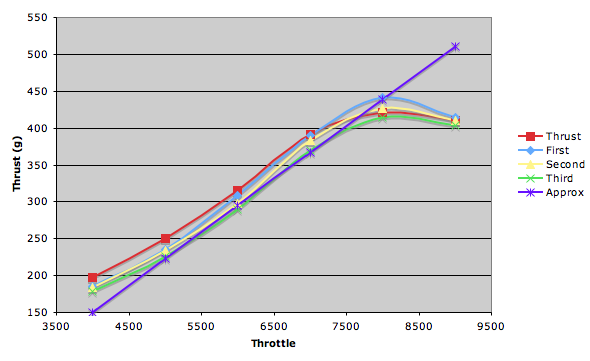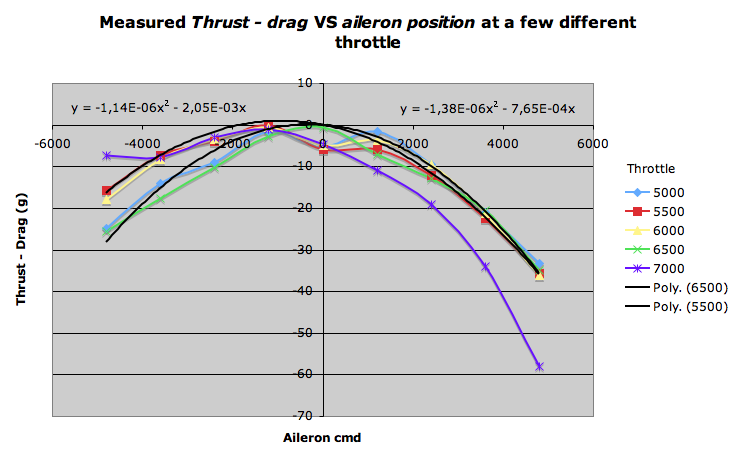new web: http://bdml.stanford.edu/pmwiki
TWiki > RisePrivate Web>PrivateRiSE > PerchingBird>PerchingThrustRollSysID (21 Aug 2008, AlexisLD)
RisePrivate Web>PrivateRiSE > PerchingBird>PerchingThrustRollSysID (21 Aug 2008, AlexisLD)
Thrust and Roll System Identification :
A few test have been realized in order to find the relationship between :- The command send to the motor and the resulting thrust.
- The drag created by the use of the ailerons.
The experimental setup hold the plane with a beam that rest on a scale. Scale measurement are then recorded to measure trust and drag.
Thrust
The measured thrust varies depending on the battery state. As the figure below shows, the thrust on the first experiment is higher than on the third. Even so, the slope seems to be about the same regardless of the battery state, and could be express as thrust (g) = 0.07216*cmd - 138 for the fit shown on the figure below.

We can also see that the propeller stalls when commanded more than 420g of thrust (a command of about 7800).
This experiment was realized with the aileron at a zero deflection.
Drag vs Aileron command
This experiment was used to determined the drag created by the ailerons. The trust-drag force was recorded on the scale for different aileron deflection, and that for different throttle values. Here are a few observations:- It as a lose quadratic shape...
- The quadratic is not perfectly centered. This is believed to be caused by the prop wash not being perfectly aligned with the fuselage, thus creating an undesired force on the scale measurement. It is assumed that this relation is centered on the origin when the plane is free flying.
- There is no clear relationship between the different throttle values used.

Feedforward compensation
Combining the previous results, we get the following result:
delta_thrust = 1.14e-6*delta_aileron^2
delta_thrust = 0.07216*delta_throttle
We can then combine the two previous equation to get a feedforward control law for the throttle:
delta_throttle = 1.58*e-5*delta*aileron^2
-- AlexisLD - 21 Aug 2008
Ideas, requests, problems regarding TWiki? Send feedback